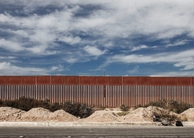Consistent with Pawson's 'realist synthesis' strand of evidence-based policy which "adopts a 'generative' understanding of causation" (2002, p. 342) and builds successful programs iteratively - drawing lessons equally from elements that worked and those that didn't - the following proposals offer practical suggestions for New Zealand’s 5 Drivers of Crime, and may have some general application for crime prevention initiatives elsewhere.
- Identify the underlying causes of crime. To meet the objective of supplementing "tough on crime" rhetoric with "smart on crime" strategies (MOJ, 2009a, p. 2), The 5 Drivers of Crime may usefully serve as a starting point from which to further advance constructive thinking and policy development regarding the complex mix of underlying causes of crime and risk factors associated with offending. Realising the ambitious policy intention of the Addressing the Drivers of Crime program by rigorously seeking to identify the underlying causes of crime, or at least some of the most significant causal drivers in important areas, and directing resources accordingly, would clearly help advance crime prevention objectives.
- Decouple the five factors as 'causative'. The complexity may be so overwhelming that we may never comprehensively isolate a unified theory adequately explaining the underlying causes of crime in any event (Hagan, 2011; Newburn, 2007). Nor does it necessarily matter if it proves impossible to identify the underlying causes of offending. The crime prevention literature emanating from Sherman's evidence-based policing synthesis holds that even without a complete causal understanding, crime prevention programs may nonetheless reduce crime and harm (1998; 2002). Until the appearance of Hagan’s criminological Galileo or Einstein (2011, p. 200), we may have only a disparate set of theories combined with the pragmatism of crime science which suggests that the positivist objective search for underlying causes of crime may be unnecessary (Clarke, 2004; Laycock, 2005) if crime prevention goals can be achieved by focusing not on the 'why' but the 'how' of crime (Paoli & Greenfield, 2015, p. 88). Whether or not the ‘real’ causes of crime can be identified, the constituent elements of The 5 Drivers of Crime retain legitimacy as risk factors correlated with crime and priority areas for policy development, but do not reflect the underlying causes of offending and victimisation, claims from which it is suggested they should therefore be decoupled.
- Update ‘drivers’. The 5 Drivers of Crime began as a means of identifying “initial priority areas,” and there is evidence of intensive implementation and positive results, so policymakers and police may consider it timely for modification or updating. If so, whether or not described as ‘drivers’, any new construct would benefit from a clear, accurate and consistent definition from the outset. Defining terms with the clarity of evidence-based rigour would help convey meaningful understanding, simply and effectively.
- Continuously integrate constructive criticism. It is axiomatic that policy programs should be exposed to rigorous monitoring, evaluation and reprioritisation for better outcomes. In the present context, the Ministers of Justice, Health and Courts jointly recommended allocating up to 5% per annum of the budget to “measuring the effectiveness of each of the initiatives [and] to inform any future reprioritisation decisions" (Cabinet, 2012b, p. 5). Earlier stages of the policy development process benefit likewise. Both may be equally heady times, when policymakers reach the end of the policy development stage, and when managers begin shaping policies for implementation. If the core premise of this article is correct, much like the apocryphal slave at triumphal processions whispering reminders of humility to Roman generals (Beard, 2007, pp. 82-92), application of a healthy dose of constructive criticism at each stage might have earlier revealed the issues raised in this paper. It is suggested that practices and culture amenable to constructive criticism within the policy development and implementation stages may help identify opportunities to improve outcomes long before formal program evaluation. Much has been written about police culture. Most of it remains anchored in the past, but encouraging and maintaining a culture genuinely open to constructive criticism is consistent with the evidence-based future of policing.
Purportedly representing the underlying causes of offending and victimisation, The 5 Drivers of Crime expressly or implicitly mischaracterises correlation for causation. Its constituent elements retain legitimacy as risk factors correlated with crime, and as initial priority areas for policy development and focus areas for intervention, but they are not causes of crime. This distinction matters, because focusing on elements that have little or no causative effect on crime, and excluding others that may arguably be causative, risks less effective outcomes. If any updated version of the ‘drivers of crime’ is defined clearly, accurately and consistently as a subset selected for priority attention from a range of factors correlated with crime, debate on the issue would deflate to less than Durant’s suggested paragraph. In the meantime, the answer to the question posed in the title is simple. No.
The author shared key findings from an early draft of this research with NZ Police. Senior representatives accepted that The 5 Drivers of Crime is not causative of offending, and confirmed its inclusion in a review of the Prevention First operating strategy. A Police media release soon afterwards (“
Warrants executed in Taranaki meth operation”, 9 December 2015) referred to “the five priorities in the Prevention First strategy” a formulation that does not expressly or impliedly suggest criminal causation.
The author gratefully acknowledges support and assistance from Adjunct Professor Michael McFadden, (Former) Detective Superintendent Peter Devoy and Ashley Balls (critique on early drafts), Professor Graham Farrell (background on England’s six key drivers of crime), Dr Gwyn Fox (linguistic stress testing), and another scholar and several practitioners, all with a passion for policy effectiveness, policing excellence, and better outcomes, unnamed for their own reasons. Although they may not agree with all the points made here, their comments on earlier versions of the ideas expressed in this article were valuable and are appreciated.
ACC. (2015). The costs of serious and organised crime in Australia 2013-2014. Retrieved from Canberra, ACT, Australia: http://www.crimecommission.gov.au/publications/intelligence-products/costs-serious-and-organised-crime-australia-2013-14
Anon (2014, 11 March 2014). [Informal unstructured interview: Drivers of crime, gatekeeper involvement, police culture].
Anon (2015a, 26 August 2015). [Informal unstructured interview: Drivers of crime, ML & professionals, ML research].
Anon (2015b, 6 November 2015). [Informal unstructured telephone discussion: Drivers of crime not causative 'worst kept secret'].
Australian Institute of Criminology. (2012). National crime prevention framework. Retrieved from http://aic.gov.au/crime_community/crimeprevention/ncpf.html
Banks, C., Maloney, E., & Willcock, H. (1975). Public attitudes to crime and the penal system. The British Journal of Criminology, 15(3), 228-240. Retrieved from http://www.jstor.org/stable/23636156
Beard, M. (2007). Roman Triumph. Cambridge, MA, USA: Harvard University Press.
Brook, E. (2014). Spotlight on,... the Asset Recovery Unit. Police News, 47(2). Retrieved from http://www.policeassn.org.nz/newsroom/publications/featured-articles/spotlight-on%E2%80%A6-asset-recovery-unit
Brown, S. E., Esbensen, F.-A., & Geis, G. (2010). Criminology: Explaining crime and its context Retrieved from http://www.eblib.com Retrieved from http://www.eblib.com
Bush, M. (2013). Brakes go on drivers of crime. Ten One(365). Retrieved from http://tenone.police.govt.nz/tenone/January13National3.htm
Byrne, M. (2015). Queensland Organised Crime Commission of Inquiry. Retrieved from https://www.organisedcrimeinquiry.qld.gov.au/__data/assets/pdf_file/0017/935/QOCCI15287-ORGANISED-CRIME-INQUIRY_Final_Report.pdf
Cabinet. (2009). Cabinet Paper. Addressing the drivers of crime. Wellington, NZ: New Zealand Government Retrieved from http://www.justice.govt.nz/justice-sector/drivers-of-crime/publications-and-background-information/documents/Addressing%20the%20Drivers%20of%20Crime%20Cabinet%20paper.pdf.
Cabinet. (2010). Cabinet Paper. Addressing the drivers of crime: progress and opportunities. Wellington, NZ: New Zealand Government Retrieved from http://www.justice.govt.nz/justice-sector/drivers-of-crime/publications-and-background-information/documents/Dec%20Cab%20paper%20for%20website.pdf.
Cabinet. (2012a). Cabinet Paper. Better public services results: targets and public communication. Wellington, NZ: New Zealand Government Retrieved from http://www.ssc.govt.nz/sites/all/files/bps-cab-paper-results-targets-25june2012_0.pdf.
Cabinet. (2012b). Cabinet Paper. Drivers of Crime. Investment package for alcohol and other drug assessments and interventions - implementation plan. Wellington, NZ: New Zealand Government Retrieved from http://www.justice.govt.nz/publications/global-publications/d/drivers-of-crime-investment-package-for-alcohol-and-other-drug-assessments-and-interventions-2013-implementation-plan-cabinet-paper.
Cabinet. (2014). Cabinet Paper. Whole-of-government action plan to reduce the harms caused by New Zealand adult gangs and transnational crime groups. Wellington, NZ: New Zealand Government Retrieved from http://www.police.govt.nz/sites/default/files/publications/cabinet-paper-whole-of-govt-action-plan-to-reduce-harms-caused-by-adult-gangs-and-transnational-crime-groups.pdf.
Campbell, A., & Muncer, S. (1990). Causes of crime: Uncovering a lay model. Criminal Justice and Behavior, 17(4), 410-419. doi:10.1177/0093854890017004002
Cantor, N. (1933). The causes of crime. Journal of Criminal Law and Criminology (1931-1951), 23(6), 1029-1034. doi:10.2307/1136079
Civilian Secretariat for Police. (2015). Draft white paper on safety and security: notice for public comments. Government Gazette: Republic of South Africa Retrieved from http://www.gov.za/sites/www.gov.za/files/38526_gen178.pdf.
Clarke, R. V. (2004). Technology, criminology and crime science. European Journal on Criminal Policy and Research, 10(1), 55-63. doi:10.1023/B:CRIM.0000037557.42894.f7
Coleman, J. W. (1992). Crime and money motivation and opportunity in a monetarized economy. The American Behavioral Scientist, 35(6), 827-836. Retrieved from http://search.proquest.com.libraryproxy.griffith.edu.au/docview/194894102?accountid=14543
Crime Prevention Action Group. (1992). Strategy paper on crime prevention: Report on the the preliminary stage of analysis. Retrieved from Wellington, NZ:
Crime Prevention Action Group. (1993). Strategic management of government crime prevention activities: CPAG Phase II interim report. Retrieved from Wellington, NZ:
Crime Prevention Unit. (1993). The New Zealand Crime Prevention Strategy. Retrieved from Wellington, NZ:
Crimes Act, 1961 No 43 Stat. (1961 1 November 1961).
Cullen, F. T., Clark, G. A., Cullen, J. B., & Mathers, R. A. (1985). Attribution, salience, and attitudes toward criminal sanctioning. Criminal Justice and Behavior, 12(3), 305-331. doi:10.1177/0093854885012003003
Davidson, I., & McGill, G. (2013). Follow the money: tackling money laundering to reduce organised crime. Paper presented at the Policing organised crime: changing landscape, changing practice conference. http://www.police-foundation.org.uk/uploads/holding/annual_conference/follow_the_money.pdf
Dills, A. K., Miron, J. A., & Summers, G. (2008). What do economists know about crime? Retrieved from Cambridge, MA, USA: http://www.nber.org/papers/w13759
Durant, W. (1949). The story of philosophy: the lives and opinions of the greater philosophers (2 ed.). New York, USA: Simon and Schuster.
Evans, M. (2015a, July 2015). Guide to good practice. TenOne.
Evans, M. (2015b). Top POP Cops head to Christchurch for final. Retrieved from http://www.police.govt.nz/news/release/top-pop-cops-head-christchurch-final
FATF. (2012). FAQ: Money laundering. Retrieved from http://www.fatf-gafi.org/pages/faq/moneylaundering/
Fréchette, L. (2000). No country alone can cope with growth of transnational crime, says Deputy Secretary-General to Vienna Crime Congress [Press release]. Retrieved from http://www.un.org/press/en/2000/20000406.dsgsm92.doc.html
Ganley, E. (2015, 28 September 2015). Human trafficking in refugees: Smugglers rule camps in northern France. CDC News. Retrieved from http://www.cbc.ca/m/touch/world/story/1.3246532
Gilmour, N. (2014). Understanding money laundering - a crime script approach. The European Review of Organised Crime, 1(2), 35-56. Retrieved from http://sgocnet.org/site/wp-content/uploads/2014/06/Gilmour_3_35-56.pdf
Gilmour, N., & Ridley, N. (2015). Everyday vulnerabilities – money laundering through cash intensive businesses. Journal of Money Laundering Control, 18(3), 293-303. doi:10.1108/JMLC-06-2014-0019
Graham, J., & Bennett, T. (1995). Crime prevention srategies in Europe and North America Retrieved from
Hagan, F. E. (2007). Introduction Introduction to criminology: Theories, methods, and criminal behavior (6 ed.). UK: Sage Publications, inc.
Hagan, F. E. (2011). Introduction to criminology: Theories, methods and criminal behaviour (7 ed.): Sage Publications, Inc.
Home Office. (2015). Opportunity/security as a driver of crime: a discussion paper. Retrieved from https://www.gov.uk/government/uploads/system/uploads/attachment_data/file/398865/Opportunity_security_final_v2.pdf
Hutt News. (2015, 15 September 2015). Meth addict terrorises. Hutt News. Retrieved from http://huttnews.realviewdigital.com/?iid=127970&startpage=page0000034#folio=34
ICPC. (2014). Crime Prevention and community safety: Trends and perspectives. Retrieved from Montréal, Québec, Canada: http://www.crime-prevention-intl.org/en/publications/report/report/article/4th-international-report-on-crime-prevention-and-community-safety.html
Laycock, G. (2005). Defining crime science. In M. J. Smith & N. Tilley (Eds.), Crime science: New approaches to preventing and detecting crime (pp. 3-24). Cullompton, Devon, UK: Willan Publishing.
Lewis, C. S. (1942). The screwtape letters. UK: Geoffrey Bles.
McFadden, M., O'Flaherty, M., Boreham, P., & Haynes, M. (2014). Targeting the profits of illicit drug trafficking through proceeds of crime action. Retrieved from Canberra, Australia: http://ndlerf.gov.au/publications/monographs/monograph-52
MOJ. (2009a). Addressing the drivers of crime: background information. Retrieved from Wellington, NZ: http://www.justice.govt.nz/justice-sector/drivers-of-crime/publications-and-background-information/documents/Addressing%20the%20Drivers%20of%20Crime%20background%20paper%20-2.pdf
MOJ. (2009b). Drivers of Crime Ministerial Meeting: Full proceedings. Retrieved from Wellington, NZ: http://www.justice.govt.nz/justice-sector/drivers-of-crime/publications-and-background-information/documents/drivers-of-crime-ministerial-meeting-proceedings
MOJ. (2009c). Risk factors and causal mechanisms for offending. Retrieved from Wellington, NZ: http://www.justice.govt.nz/justice-sector/drivers-of-crime/publications-and-background-information/documents/spb-risk-factors-and-causal-mechanisms
MOJ. (2011). Strengthening New Zealand's resistance to organised crime: An all-of-government response. Retrieved from Wellington, NZ: http://www.justice.govt.nz/publications/global-publications/s/strengthening-new-zealands-resistance-to-organised-crime
Murray, K. (2011). The uses of irresistible inference: Protecting the system from criminal penetration through more effective prosecution of money laundering offences. Journal of Money Laundering Control, 14(1), 7-15. doi:10.1108/13685201111098842
Newburn, T. (2007). Criminology. Cullompton, Devon, UK: Willan Publishing.
Nippert, M. (2013, 12 February 2012). Economic crime costs NZ billions each year. Stuff. Retrieved from http://www.stuff.co.nz/business/industries/8291073/Economic-crime-costs-NZ-billions-each-year
Federal Government's response to money laundering: Hearings before the Committee on Banking, Finance & Urban Affairs (Statement of Ronald K Noble, Assistant Secretary for Enforcement, US Department of the Treasury), 103d Congress, 1st Sess 200-01 Sess (1993).
NZ Police. (2009a). Illicit drug strategy to 2010. Retrieved from Wellington, NZ: https://www.police.govt.nz/resources/2009/NZ_Police_Illicit_Drug_Strategy_2009.pdf
NZ Police. (2009b). Statement of Intent 2009/10 - 2011/12. Retrieved from Wellington, NZ: http://www.police.govt.nz/sites/default/files/publications/statement-of-intent-2009-10-2011-12.pdf
NZ Police. (2010). Organised crime in New Zealand. Retrieved from Wellington, NZ: http://www.ofcanz.govt.nz/sites/default/files/Organised-Crime-in-NZ-2010-Public-Version.pdf
NZ Police. (2011). Annual Report 2010/11. Retrieved from Wellington, NZ: http://www.police.govt.nz/sites/default/files/publications/annual-report-2011.pdf
NZ Police. (2012a). Prevention first: National operating strategy 2011-2015. Retrieved from Wellington, NZ: http://www.police.govt.nz/sites/default/files/publications/prevention-first-strategy-2011-2015.pdf
NZ Police. (2012b). Statement of Intent 2012-2014. Retrieved from Wellington, NZ: http://www.police.govt.nz/sites/default/files/publications/statement-of-intent-2012-13-2014-15.pdf
NZ Police. (2013a). Policing excellence programme charter. Retrieved from Wellington, NZ:
NZ Police. (2013b). Statement of Intent 2013/2014 - 2015/2016. Retrieved from Wellington, NZ: http://www.police.govt.nz/sites/default/files/publications/statement-of-intent-2013-14-2015-16.pdf
NZ Police. (2014a). Annual Report 2013/2014. Retrieved from Wellington, NZ: http://www.police.govt.nz/sites/default/files/publications/annual-report-2014.pdf
NZ Police. (2014b). Policing Excellence: the transformation of New Zealand Police 2009-2014. Retrieved from Wellington, NZ: http://www.police.govt.nz/sites/default/files/publications/policing-excellence-closure.pdf
NZ Police. (2014c). Statement of Intent 2014/15 - 2017/18. Retrieved from New Zealand Police: http://www.police.govt.nz/sites/default/files/publications/2014-statement-of-intent.pdf
NZ Police. (2015). Four year plan 2015/16 - 2018/19. Retrieved from Wellington, NZ: http://www.police.govt.nz/sites/default/files/publications/strategic-plan-2015-08-06-four-year-plan.pdf
O'Neill, R. (1993). Crime prevention strategies: the New Zealand model. Social Policy Journal of New Zealand, 1(1). Retrieved from http://www.msd.govt.nz/about-msd-and-our-work/publications-resources/journals-and-magazines/social-policy-journal/spj01/01-crime-prevention.html
Paoli, L., & Greenfield, V. A. (2015). Starting from the end: A plea for focusing on the consequences of crime. European Journal of Crime, Criminal Law and Criminal Justice, 23(2), 87-100. doi:doi:10.1163/15718174-23022062
Pawson, R. (2002). Evidence-based policy: The promise of `realist synthesis'. Evaluation, 8(3), 340-358. doi:10.1177/135638902401462448
Power, S. (2009). Drivers of crime ministerial meeting: opening remarks. Paper presented at the Drivers of crime ministerial meeting, Wellington, NZ. http://www.justice.govt.nz/justice-sector/drivers-of-crime/drivers-of-crime-ministerial-meeting/speeches/opening-remarks
Power, S. (2011). Speech to Institute of Policy Studies 'Costs of crime' forum. Paper presented at the Costs of crime, Wellington, NZ. http://www.rethinking.org.nz/assets/Cost%20of%20Crime/Hon%20Simon%20Power%20Speech%20Costs%20of%20Crime%202011.pdf
R v Zhang & Ors, No. CRI-2013-092-11602, [2015] NZHC 2325 (High Court of New Zealand, Auckland 2015).
Reuterman, N. A. (1978). The public's views of delinquency causation: A consideration in comprehensive juvenile justice planning. Juvenile and Family Court Journal, 29(3), 39-45. doi:10.1111/j.1755-6988.1978.tb01155.x
Reuterman, N. A., & Cartwright, D. S. (1976). Practitioners' views of delinquency causation: A consideration in comprehensive juvenile justice planning. Criminal Justice and Behavior, 3(1), 67-84. doi:10.1177/009385487600300106
Roper, T., & Thompson, A. (2006). Estimating the costs of crime in New Zealand in 2003/04. Retrieved from http://www.treasury.govt.nz/publications/research-policy/wp/2006/06-04/twp06-04.pdf
Rose, J. (2014). Economic crime costs up to $9.4bn. Radio NZ. Retrieved from http://www.radionz.co.nz/news/national/257185/economic-crime-costs-up-to-$9-point-4bn
Serious Fraud Office. (2012). Cost of economic crime report: An estimate by the serious Fraud Office of the total scale of fraud in New Zealand [Draft, redacted version]. Retrieved from Auckland, NZ: https://s3.amazonaws.com/s3.documentcloud.org/documents/1336568/img-x14110421-0001.pdf
Sherman, L. W. (1998). Evidence-based policing. Ideas in American Policing(July 1998), 1-15. Retrieved from http://www.policefoundation.org/wp-content/uploads/2015/06/Sherman-1998-Evidence-Based-Policing.pdf
Sherman, L. W., Farrington, D. P., Welsh, B. C., & MacKenzie, D. L. (2002). Evidence-based crime prevention. London, UK; New York, USA: Routledge.
Søreide, T. (2014). Drivers of corruption: A brief review International Bank for Reconstruction and Development / The World Bank.
SSC, Treasury, & DPMC. (2014). Performance improvement framework: Follow-up review of New Zealand Police. Wellington, NZ: New Zealand Government Retrieved from http://www.police.govt.nz/sites/default/files/publications/performance-improvement-framework-follow-up.pdf.
St Thomas of Canterbury College. (2015). Edmund Rice Youth Custody Index 2015. Retrieved from Christchurch, NZ: http://www.erjustice.org.nz/wp-content/uploads/2010/10/YCI-2015.pdf
Stankiewicz, N. (2015). Using anti-money laundering measures in the financial world to combat organized crime. Student Pulse, 7(10). http://www.inquiriesjournal.com/a?id=1268 Retrieved from http://www.inquiriesjournal.com/a?id=1268
Stuff. (2015, 15 September 2015). Louis Vuitton handbag seized in $800,000 meth bust. Stuff. Retrieved from http://www.stuff.co.nz/auckland/local-news/72088681/louis-vuitton-handbag-seized-in-800000-meth-bust
United Nations convention against transnational organized crime, (2000).
UN ECOSOC. (2002). Guidelines for the prevention of crime (Vol. ECOSOC Resolution 2002/13 (Action to promote effective crime prevention), Annex). New York: United Nations Economic and Social Council (ECOSOC).
UNODC. (2011). Estimating illicit financial flows resulting from drug trafficking and other transnational organized crimes. Retrieved from https://www.unodc.org/documents/data-and-analysis/Studies/Illicit_financial_flows_2011_web.pdf
1.) Cabinet is the central policy and decision-making body of the executive branch of New Zealand's government, comprising the Prime Minister and other senior ministers.
2.) The author has not seen evidence that any of the enumerated signposts, other than the first, were actually uncovered in the Addressing the Drivers of Crime policy process from which The 5 Drivers of Crime resulted. Although readily accessible from a cursory glance at the scientific evidence base and the government’s own records, it is plausible that in 2009/2010 policymakers and Police were not aware of the latter three, in which case they are listed here with the usual benefits of hindsight.
3.) Although it may not have been available to them, participants’ comments echoed the earlier national crime prevention initiative noted above. Addressing white-collar crime - costing “billions of dollars” each year (Crime Prevention Action Group, 1992, pp. 28, 74) and carrying societal impact “considerably greater than the cost of robbery, theft and burglary combined” (Crime Prevention Unit, 1993, p. 11) - had been listed as one of seven crime prevention policy goals (Crime Prevention Action Group, 1992, 1993).
4.) The data are scant, and assumptions heroic, and without access to the underlying data these estimates are intended merely illustrative.
5.) This is consistent with earlier research indicating that “the value and impact of white-collar crime,” costing “billions of dollars” each year, “is considerably greater than the cost of robbery, theft and burglary combined” (Crime Prevention Action Group, 1992, pp. 27, 28, 74; Crime Prevention Unit, 1993, p. 11).
ACC. (2015). The costs of serious and organised crime in Australia 2013-2014. Retrieved from Canberra, ACT, Australia: http://www.crimecommission.gov.au/publications/intelligence-products/costs-serious-and-organised-crime-australia-2013-14
Anon (2014, 11 March 2014). [Informal unstructured interview: Drivers of crime, gatekeeper involvement, police culture].
Anon (2015a, 26 August 2015). [Informal unstructured interview: Drivers of crime, ML & professionals, ML research].
Anon (2015b, 6 November 2015). [Informal unstructured telephone discussion: Drivers of crime not causative 'worst kept secret'].
Australian Institute of Criminology. (2012). National crime prevention framework. Retrieved from http://aic.gov.au/crime_community/crimeprevention/ncpf.html
Banks, C., Maloney, E., & Willcock, H. (1975). Public attitudes to crime and the penal system. The British Journal of Criminology, 15(3), 228-240. Retrieved from http://www.jstor.org/stable/23636156
Beard, M. (2007). Roman Triumph. Cambridge, MA, USA: Harvard University Press.
Brook, E. (2014). Spotlight on,... the Asset Recovery Unit. Police News, 47(2). Retrieved from http://www.policeassn.org.nz/newsroom/publications/featured-articles/spotlight-on%E2%80%A6-asset-recovery-unit
Brown, S. E., Esbensen, F.-A., & Geis, G. (2010). Criminology: Explaining crime and its context Retrieved from http://www.eblib.com Retrieved from http://www.eblib.com
Bush, M. (2013). Brakes go on drivers of crime. Ten One(365). Retrieved from http://tenone.police.govt.nz/tenone/January13National3.htm
Byrne, M. (2015). Queensland Organised Crime Commission of Inquiry. Retrieved from https://www.organisedcrimeinquiry.qld.gov.au/__data/assets/pdf_file/0017/935/QOCCI15287-ORGANISED-CRIME-INQUIRY_Final_Report.pdf
Cabinet. (2009). Cabinet Paper. Addressing the drivers of crime. Wellington, NZ: New Zealand Government Retrieved from http://www.justice.govt.nz/justice-sector/drivers-of-crime/publications-and-background-information/documents/Addressing%20the%20Drivers%20of%20Crime%20Cabinet%20paper.pdf.
Cabinet. (2010). Cabinet Paper. Addressing the drivers of crime: progress and opportunities. Wellington, NZ: New Zealand Government Retrieved from http://www.justice.govt.nz/justice-sector/drivers-of-crime/publications-and-background-information/documents/Dec%20Cab%20paper%20for%20website.pdf.
Cabinet. (2012a). Cabinet Paper. Better public services results: targets and public communication. Wellington, NZ: New Zealand Government Retrieved from http://www.ssc.govt.nz/sites/all/files/bps-cab-paper-results-targets-25june2012_0.pdf.
Cabinet. (2012b). Cabinet Paper. Drivers of Crime. Investment package for alcohol and other drug assessments and interventions - implementation plan. Wellington, NZ: New Zealand Government Retrieved from http://www.justice.govt.nz/publications/global-publications/d/drivers-of-crime-investment-package-for-alcohol-and-other-drug-assessments-and-interventions-2013-implementation-plan-cabinet-paper.
Cabinet. (2014). Cabinet Paper. Whole-of-government action plan to reduce the harms caused by New Zealand adult gangs and transnational crime groups. Wellington, NZ: New Zealand Government Retrieved from http://www.police.govt.nz/sites/default/files/publications/cabinet-paper-whole-of-govt-action-plan-to-reduce-harms-caused-by-adult-gangs-and-transnational-crime-groups.pdf.
Campbell, A., & Muncer, S. (1990). Causes of crime: Uncovering a lay model. Criminal Justice and Behavior, 17(4), 410-419. doi:10.1177/0093854890017004002
Cantor, N. (1933). The causes of crime. Journal of Criminal Law and Criminology (1931-1951), 23(6), 1029-1034. doi:10.2307/1136079
Civilian Secretariat for Police. (2015). Draft white paper on safety and security: notice for public comments. Government Gazette: Republic of South Africa Retrieved from http://www.gov.za/sites/www.gov.za/files/38526_gen178.pdf.
Clarke, R. V. (2004). Technology, criminology and crime science. European Journal on Criminal Policy and Research, 10(1), 55-63. doi:10.1023/B:CRIM.0000037557.42894.f7
Coleman, J. W. (1992). Crime and money motivation and opportunity in a monetarized economy. The American Behavioral Scientist, 35(6), 827-836. Retrieved from http://search.proquest.com.libraryproxy.griffith.edu.au/docview/194894102?accountid=14543
Crime Prevention Action Group. (1992). Strategy paper on crime prevention: Report on the the preliminary stage of analysis. Retrieved from Wellington, NZ:
Crime Prevention Action Group. (1993). Strategic management of government crime prevention activities: CPAG Phase II interim report. Retrieved from Wellington, NZ:
Crime Prevention Unit. (1993). The New Zealand Crime Prevention Strategy. Retrieved from Wellington, NZ:
Crimes Act, 1961 No 43 Stat. (1961 1 November 1961).
Cullen, F. T., Clark, G. A., Cullen, J. B., & Mathers, R. A. (1985). Attribution, salience, and attitudes toward criminal sanctioning. Criminal Justice and Behavior, 12(3), 305-331. doi:10.1177/0093854885012003003
Davidson, I., & McGill, G. (2013). Follow the money: tackling money laundering to reduce organised crime. Paper presented at the Policing organised crime: changing landscape, changing practice conference. http://www.police-foundation.org.uk/uploads/holding/annual_conference/follow_the_money.pdf
Dills, A. K., Miron, J. A., & Summers, G. (2008). What do economists know about crime? Retrieved from Cambridge, MA, USA: http://www.nber.org/papers/w13759
Durant, W. (1949). The story of philosophy: the lives and opinions of the greater philosophers (2 ed.). New York, USA: Simon and Schuster.
Evans, M. (2015a, July 2015). Guide to good practice. TenOne.
Evans, M. (2015b). Top POP Cops head to Christchurch for final. Retrieved from http://www.police.govt.nz/news/release/top-pop-cops-head-christchurch-final
FATF. (2012). FAQ: Money laundering. Retrieved from http://www.fatf-gafi.org/pages/faq/moneylaundering/
Fréchette, L. (2000). No country alone can cope with growth of transnational crime, says Deputy Secretary-General to Vienna Crime Congress [Press release]. Retrieved from http://www.un.org/press/en/2000/20000406.dsgsm92.doc.html
Ganley, E. (2015, 28 September 2015). Human trafficking in refugees: Smugglers rule camps in northern France. CDC News. Retrieved from http://www.cbc.ca/m/touch/world/story/1.3246532
Gilmour, N. (2014). Understanding money laundering - a crime script approach. The European Review of Organised Crime, 1(2), 35-56. Retrieved from http://sgocnet.org/site/wp-content/uploads/2014/06/Gilmour_3_35-56.pdf
Gilmour, N., & Ridley, N. (2015). Everyday vulnerabilities – money laundering through cash intensive businesses. Journal of Money Laundering Control, 18(3), 293-303. doi:10.1108/JMLC-06-2014-0019
Graham, J., & Bennett, T. (1995). Crime prevention srategies in Europe and North America Retrieved from
Hagan, F. E. (2007). Introduction Introduction to criminology: Theories, methods, and criminal behavior (6 ed.). UK: Sage Publications, inc.
Hagan, F. E. (2011). Introduction to criminology: Theories, methods and criminal behaviour (7 ed.): Sage Publications, Inc.
Home Office. (2015). Opportunity/security as a driver of crime: a discussion paper. Retrieved from https://www.gov.uk/government/uploads/system/uploads/attachment_data/file/398865/Opportunity_security_final_v2.pdf
Hutt News. (2015, 15 September 2015). Meth addict terrorises. Hutt News. Retrieved from http://huttnews.realviewdigital.com/?iid=127970&startpage=page0000034#folio=34
ICPC. (2014). Crime Prevention and community safety: Trends and perspectives. Retrieved from Montréal, Québec, Canada: http://www.crime-prevention-intl.org/en/publications/report/report/article/4th-international-report-on-crime-prevention-and-community-safety.html
Laycock, G. (2005). Defining crime science. In M. J. Smith & N. Tilley (Eds.), Crime science: New approaches to preventing and detecting crime (pp. 3-24). Cullompton, Devon, UK: Willan Publishing.
Lewis, C. S. (1942). The screwtape letters. UK: Geoffrey Bles.
McFadden, M., O'Flaherty, M., Boreham, P., & Haynes, M. (2014). Targeting the profits of illicit drug trafficking through proceeds of crime action. Retrieved from Canberra, Australia: http://ndlerf.gov.au/publications/monographs/monograph-52
MOJ. (2009a). Addressing the drivers of crime: background information. Retrieved from Wellington, NZ: http://www.justice.govt.nz/justice-sector/drivers-of-crime/publications-and-background-information/documents/Addressing%20the%20Drivers%20of%20Crime%20background%20paper%20-2.pdf
MOJ. (2009b). Drivers of Crime Ministerial Meeting: Full proceedings. Retrieved from Wellington, NZ: http://www.justice.govt.nz/justice-sector/drivers-of-crime/publications-and-background-information/documents/drivers-of-crime-ministerial-meeting-proceedings
MOJ. (2009c). Risk factors and causal mechanisms for offending. Retrieved from Wellington, NZ: http://www.justice.govt.nz/justice-sector/drivers-of-crime/publications-and-background-information/documents/spb-risk-factors-and-causal-mechanisms
MOJ. (2011). Strengthening New Zealand's resistance to organised crime: An all-of-government response. Retrieved from Wellington, NZ: http://www.justice.govt.nz/publications/global-publications/s/strengthening-new-zealands-resistance-to-organised-crime
Murray, K. (2011). The uses of irresistible inference: Protecting the system from criminal penetration through more effective prosecution of money laundering offences. Journal of Money Laundering Control, 14(1), 7-15. doi:10.1108/13685201111098842
Newburn, T. (2007). Criminology. Cullompton, Devon, UK: Willan Publishing.
Nippert, M. (2013, 12 February 2012). Economic crime costs NZ billions each year. Stuff. Retrieved from http://www.stuff.co.nz/business/industries/8291073/Economic-crime-costs-NZ-billions-each-year
Federal Government's response to money laundering: Hearings before the Committee on Banking, Finance & Urban Affairs (Statement of Ronald K Noble, Assistant Secretary for Enforcement, US Department of the Treasury), 103d Congress, 1st Sess 200-01 Sess (1993).
NZ Police. (2009a). Illicit drug strategy to 2010. Retrieved from Wellington, NZ: https://www.police.govt.nz/resources/2009/NZ_Police_Illicit_Drug_Strategy_2009.pdf
NZ Police. (2009b). Statement of Intent 2009/10 - 2011/12. Retrieved from Wellington, NZ: http://www.police.govt.nz/sites/default/files/publications/statement-of-intent-2009-10-2011-12.pdf
NZ Police. (2010). Organised crime in New Zealand. Retrieved from Wellington, NZ: http://www.ofcanz.govt.nz/sites/default/files/Organised-Crime-in-NZ-2010-Public-Version.pdf
NZ Police. (2011). Annual Report 2010/11. Retrieved from Wellington, NZ: http://www.police.govt.nz/sites/default/files/publications/annual-report-2011.pdf
NZ Police. (2012a). Prevention first: National operating strategy 2011-2015. Retrieved from Wellington, NZ: http://www.police.govt.nz/sites/default/files/publications/prevention-first-strategy-2011-2015.pdf
NZ Police. (2012b). Statement of Intent 2012-2014. Retrieved from Wellington, NZ: http://www.police.govt.nz/sites/default/files/publications/statement-of-intent-2012-13-2014-15.pdf
NZ Police. (2013a). Policing excellence programme charter. Retrieved from Wellington, NZ:
NZ Police. (2013b). Statement of Intent 2013/2014 - 2015/2016. Retrieved from Wellington, NZ: http://www.police.govt.nz/sites/default/files/publications/statement-of-intent-2013-14-2015-16.pdf
NZ Police. (2014a). Annual Report 2013/2014. Retrieved from Wellington, NZ: http://www.police.govt.nz/sites/default/files/publications/annual-report-2014.pdf
NZ Police. (2014b). Policing Excellence: the transformation of New Zealand Police 2009-2014. Retrieved from Wellington, NZ: http://www.police.govt.nz/sites/default/files/publications/policing-excellence-closure.pdf
NZ Police. (2014c). Statement of Intent 2014/15 - 2017/18. Retrieved from New Zealand Police: http://www.police.govt.nz/sites/default/files/publications/2014-statement-of-intent.pdf
NZ Police. (2015). Four year plan 2015/16 - 2018/19. Retrieved from Wellington, NZ: http://www.police.govt.nz/sites/default/files/publications/strategic-plan-2015-08-06-four-year-plan.pdf
O'Neill, R. (1993). Crime prevention strategies: the New Zealand model. Social Policy Journal of New Zealand, 1(1). Retrieved from http://www.msd.govt.nz/about-msd-and-our-work/publications-resources/journals-and-magazines/social-policy-journal/spj01/01-crime-prevention.html
Paoli, L., & Greenfield, V. A. (2015). Starting from the end: A plea for focusing on the consequences of crime. European Journal of Crime, Criminal Law and Criminal Justice, 23(2), 87-100. doi:doi:10.1163/15718174-23022062
Pawson, R. (2002). Evidence-based policy: The promise of `realist synthesis'. Evaluation, 8(3), 340-358. doi:10.1177/135638902401462448
Power, S. (2009). Drivers of crime ministerial meeting: opening remarks. Paper presented at the Drivers of crime ministerial meeting, Wellington, NZ. http://www.justice.govt.nz/justice-sector/drivers-of-crime/drivers-of-crime-ministerial-meeting/speeches/opening-remarks
Power, S. (2011). Speech to Institute of Policy Studies 'Costs of crime' forum. Paper presented at the Costs of crime, Wellington, NZ. http://www.rethinking.org.nz/assets/Cost%20of%20Crime/Hon%20Simon%20Power%20Speech%20Costs%20of%20Crime%202011.pdf
R v Zhang & Ors, No. CRI-2013-092-11602, [2015] NZHC 2325 (High Court of New Zealand, Auckland 2015).
Reuterman, N. A. (1978). The public's views of delinquency causation: A consideration in comprehensive juvenile justice planning. Juvenile and Family Court Journal, 29(3), 39-45. doi:10.1111/j.1755-6988.1978.tb01155.x
Reuterman, N. A., & Cartwright, D. S. (1976). Practitioners' views of delinquency causation: A consideration in comprehensive juvenile justice planning. Criminal Justice and Behavior, 3(1), 67-84. doi:10.1177/009385487600300106
Roper, T., & Thompson, A. (2006). Estimating the costs of crime in New Zealand in 2003/04. Retrieved from http://www.treasury.govt.nz/publications/research-policy/wp/2006/06-04/twp06-04.pdf
Rose, J. (2014). Economic crime costs up to $9.4bn. Radio NZ. Retrieved from http://www.radionz.co.nz/news/national/257185/economic-crime-costs-up-to-$9-point-4bn
Serious Fraud Office. (2012). Cost of economic crime report: An estimate by the serious Fraud Office of the total scale of fraud in New Zealand [Draft, redacted version]. Retrieved from Auckland, NZ: https://s3.amazonaws.com/s3.documentcloud.org/documents/1336568/img-x14110421-0001.pdf
Sherman, L. W. (1998). Evidence-based policing. Ideas in American Policing(July 1998), 1-15. Retrieved from http://www.policefoundation.org/wp-content/uploads/2015/06/Sherman-1998-Evidence-Based-Policing.pdf
Sherman, L. W., Farrington, D. P., Welsh, B. C., & MacKenzie, D. L. (2002). Evidence-based crime prevention. London, UK; New York, USA: Routledge.
Søreide, T. (2014). Drivers of corruption: A brief review International Bank for Reconstruction and Development / The World Bank.
SSC, Treasury, & DPMC. (2014). Performance improvement framework: Follow-up review of New Zealand Police. Wellington, NZ: New Zealand Government Retrieved from http://www.police.govt.nz/sites/default/files/publications/performance-improvement-framework-follow-up.pdf.
St Thomas of Canterbury College. (2015). Edmund Rice Youth Custody Index 2015. Retrieved from Christchurch, NZ: http://www.erjustice.org.nz/wp-content/uploads/2010/10/YCI-2015.pdf
Stankiewicz, N. (2015). Using anti-money laundering measures in the financial world to combat organized crime. Student Pulse, 7(10). http://www.inquiriesjournal.com/a?id=1268 Retrieved from http://www.inquiriesjournal.com/a?id=1268
Stuff. (2015, 15 September 2015). Louis Vuitton handbag seized in $800,000 meth bust. Stuff. Retrieved from http://www.stuff.co.nz/auckland/local-news/72088681/louis-vuitton-handbag-seized-in-800000-meth-bust
United Nations convention against transnational organized crime, (2000).
UN ECOSOC. (2002). Guidelines for the prevention of crime (Vol. ECOSOC Resolution 2002/13 (Action to promote effective crime prevention), Annex). New York: United Nations Economic and Social Council (ECOSOC).
UNODC. (2011). Estimating illicit financial flows resulting from drug trafficking and other transnational organized crimes. Retrieved from https://www.unodc.org/documents/data-and-analysis/Studies/Illicit_financial_flows_2011_web.pdf
Endnotes
1.) Cabinet is the central policy and decision-making body of the executive branch of New Zealand's government, comprising the Prime Minister and other senior ministers.
2.) The author has not seen evidence that any of the enumerated signposts, other than the first, were actually uncovered in the Addressing the Drivers of Crime policy process from which The 5 Drivers of Crime resulted. Although readily accessible from a cursory glance at the scientific evidence base and the government’s own records, it is plausible that in 2009/2010 policymakers and Police were not aware of the latter three, in which case they are listed here with the usual benefits of hindsight.
3.) Although it may not have been available to them, participants’ comments echoed the earlier national crime prevention initiative noted above. Addressing white-collar crime - costing “billions of dollars” each year (Crime Prevention Action Group, 1992, pp. 28, 74) and carrying societal impact “considerably greater than the cost of robbery, theft and burglary combined” (Crime Prevention Unit, 1993, p. 11) - had been listed as one of seven crime prevention policy goals (Crime Prevention Action Group, 1992, 1993).
4.) The data are scant, and assumptions heroic, and without access to the underlying data these estimates are intended merely illustrative.
5.) This is consistent with earlier research indicating that “the value and impact of white-collar crime,” costing “billions of dollars” each year, “is considerably greater than the cost of robbery, theft and burglary combined” (Crime Prevention Action Group, 1992, pp. 27, 28, 74; Crime Prevention Unit, 1993, p. 11).



















